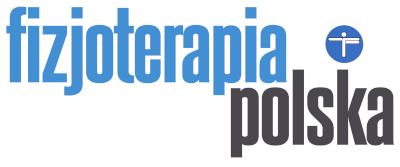Quality of life of children with ICP as assessed by parents
Artur Marszałek, Zuzanna Płaza, Zbigniew Śliwiński
A. Marszałek, Z. Płaza, Z. Śliwiński – Quality of life of children with ICP as assessed by parents. Fizjoterapia Polska 2020; 20(4); 6-14
Introduction. Infantile cerebral palsy should not be treated as a separate disease entity. It is a complex of different symptoms resulting from various etiological factors. It is “a permanent, time-changing disturbance of movement or posture, or movement and posture, with dysfunctions, resulting from permanent, non-progressive brain damage at the stage of incomplete development”. It is estimated that the prevalence of cerebral palsy in Poland is 2.0–2.5 per 1,000 live births.
Objective. Assessment of the quality of life of children with ICP based on the opinions of their parents.
Material and methods. The study uses the method of a diagnostic survey. A group of parents of 25 children with infantile cerebral palsy and, as a control group, parents of 25 healthy children were interviewed. For this purpose, the CHQ-PF 50 child health questionnaire was used to measure the parents’ perceptions of their children’s quality of life.
Conclusions. Infantile cerebral palsy, like any other type of disability, reduces the quality of life. ICP has a negative impact on the functioning of children in society, causing them to feel discomfort in various areas of life.
| Pobierz/Download/下載/Cкачиваете | Atsisiųskite straipsnį anglų kalba nemokamai |

